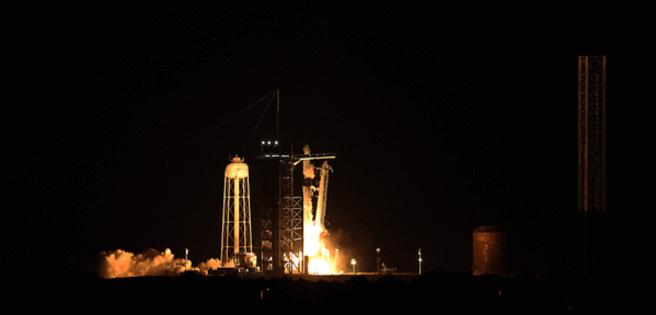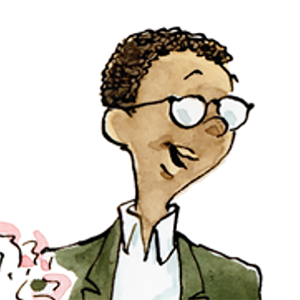SpaceX Crew-9's duo arrive to Kennedy Space Center ahead of launch
Published in News & Features
Only two of the original four members of SpaceX Crew-9’s mission to the International Space Station arrived to Kennedy Space Center on Saturday, making room on their future ride home next year for the pair of NASA astronauts left behind by Boeing’s Starliner.
NASA astronaut and Space Force Col. Nick Hague and Roscosmos cosmonaut Aleksandr Gorbunov flew into KSC landing at the former space shuttle landing facility. They’re gearing up for a launch in the Crew Dragon Freedom atop a SpaceX Falcon 9 rocket from Cape Canaveral Space Force Station’s Space Launch Complex 40 as early as Thursday — targeting liftoff at 2:05 p.m. with backup dates available Friday and Saturday.
The duo will remain in quarantine at the Neil A. Armstrong Operations and Checkout Building until launch.
The launch from Canaveral will be the first for SLC-40 as all previous SpaceX human spaceflights have been from Kennedy Space Center. SpaceX built out a second crew access tower so it could use either pad, and KSC’s Launch Pad 39-A is being prepped for NASA’s Europa Clipper mission that will fly on a Falcon Heavy in October.
NASA made the call to send the Crew Dragon up with only two passengers so that the Starliner Crew Flight Test mission’s Butch Wilmore and Suni Williams, who arrived to the ISS on June 6, could make the return flight alongside when the Crew-9 mission flies home in February.
NASA opted to send Boeing’s spacecraft home uncrewed after safety concerns with its propulsion system. Starliner ended up making a safe return Sept. 7 minus its commander and pilot, who along with Hague and Gorbunov, will be part of the Expedition 72 crew on the station.
Williams will take over the ISS command once Crew-9 arrives and the Expedition 71 mission officially becomes Expedition 72. She and Wilmore spoke to media last week.
“What we look forward to is being here and being part of the crew that’s here,” Williams said. “You know, we’ve been part of Expedition 71 they’re a great bunch of people, and we’ve tried to just jump in and do whatever we can.”
Williams and Wilmore made the CFT flight as test pilots, but both had previously stayed on board the ISS as veterans of both space shuttle and Soyuz missions.
“We are fully qualified crew members, both qualified in spacewalking, EVAs and robotics for visiting vehicles, so the transition was not that hard,” Williams said. “You know, both of us are mechanically inclined, righty, tighty, lefty loosey. There’s a lot of things to do on the space station when it comes to maintenance and repair.”
And now the duo have become part of the science mission on board ISS, as well, with more than three months on board so far and more than five months to go before their return flight home.
“We’re waiting for Nick and Alex to get up here,” she said. “We’re here with our friends. We’ve got a ride home, and we’re looking forward to the next couple months and doing a lot of stuff for the International Space Station.”
The odd astronauts out for the Crew-9 flight were previously assigned Zena Cardman, who was originally slated to be commander but would have been making her first spaceflight, and Stephanie Wilson, a veteran of three space shuttle flights.
Instead, NASA kept with veteran Hague, now in the role of commander, who is making his third launch while rookie Gorbunov takes on the pilot role, and was kept in the crew so NASA and Roscosmos can maintain their seat tradeoff deal that flies astronauts on Russia Soyuz rockets to the ISS as well.
Hague is the first active Space Force member to launch, although one previous NASA astronaut, Col. Mike Hopkins, actually switched from Air Force to Space Force while in orbit after his trip to the ISS as part of Crew-1.
Hague’s first two launches were as a member of the Air Force as he joined Space Force in 2021.
The first of Hague’s two previous launches was memorable because he and Roscosmos cosmonaut crewmate Alexey Ovchinin didn’t make it to the ISS. They had launched in a Soyuz capsule from Kazakhstan in 2018, but it blasted away from a malfunctioning booster and didn’t make orbit.
The altitude of the Soyuz capsule passed the 50-mile mark the U.S. considers for awarding astronaut status, although it’s shy of the Karman line, which is the internationally recognized line for having made it to space at around 62 miles high.
“I got to experience a few seconds of weightlessness and I was able to watch a few things float around in the capsule,” Hague said. “I was also able to look out the window primarily to make sure, ‘Hey, are we in a good attitude? Are we stable? Are we ready to come back down?’ But also to look out the window and realize, you know, looking down at the curvature of the Earth and out into the blackness of space, and realizing I got close but it wasn’t going to be this time.”
The duo got another shot, though, five months later in 2019, and that time they made it past the Karman line along with NASA astronaut Christina Koch. Hague spent more than 200 days on board the ISS.
Hague will find a familiar face on board the ISS once he arrives as Ovchinin just arrived earlier this month for his third stay at the station flying up on a Soyuz alongside NASA astronaut Don Pettit and Roscosmos cosmonaut Ivan Vagner.
Also waiting at the ISS are the four members of Crew-8 — NASA astronauts Matthew Dominick, Mike Barratt and Jeanette Epps as well as Roscosmos’ Alexander Grebenkin. They arrived to the ISS back in March and will leave in the SpaceX Crew Dragon Endeavour a few days after Crew-9’s arrival.
Once they leave, the ISS will be back to its normal complement of seven crew with no new replacements until February.
©2024 Orlando Sentinel. Visit orlandosentinel.com. Distributed by Tribune Content Agency, LLC.







Comments